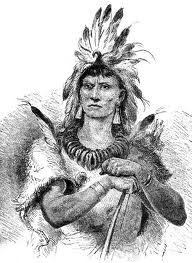Powhatan County Genealogy Records, Wills, Estates, Probate Records

Images of Wills 1777 to 1795
Testators:
- Ballow, Thomas
- Banton, William Sr.
- Baskerville, John
- Baugh, Joseph
- Bayley, William
- Bingley, Matthew
- Bryant, James
- Cheatwood, William
- Cox, Edward
- Cox, George
- Cox, Henry
- Cox, John
- Dickens, Ann
- Edwards, William
- Elam, Lodowick
- Farley, Matthew
- Flournoy, Elizabeth
- Flournoy, Thomas
- Franklin, John
- Harris, Edith
- Harris, Joseph
- Harris, William
- Haskins, Edward
- Hatcher, Elizabeth
- Hughes, Martha
- Hughes, Robert
- Jordan, Robert
- Langston, Esther
- Macon, John
- McCraw, James
- Moseley, Benjamin
- Moss, James
- Moss, Mary
- Porter, John
- Roper, Shadrack
- Smith, Magdalene
- Trent, Alexander
- Wilkerson, Nicholas
- Wilks, Thomas
- Woodson, Charles
- Woodson, Joseph
Images of Wills 1797 to 1806
Testators:
- Ballew, Tabitha
- Baugh, John
- Brackett, Boyle
- Brackett, Thomas
- Causby, James
- Cosby, Charles
- Cox, John
- Crump, Abner
- Davis, Elizabeth
- Davis, Jerry
- Elam, Thomas
- Goode, Thomas
- Gordon, Robert
- Harris, Benjamin
- Harris, John Sr.
- Haskins, Martha
- Hughes, Ann
- Hughes, Mary
- Jude, Benjamin
- Marshall, William
- Martin, Anthony
- Maxey, John
- Mayo, Joseph
- Mayo, William
- McLaurine, Elizabeth
- Miller, Jesse
- Moseley, John
- Netherland, John
- Royall, John Jr.
- Smith, Betsy
- Smith, John
- Smith, Mary
- Smith, W. S.
- Spears, Nancy
- Taylor, Elizabeth
- Thompson, Josiah
- Toney, Edmund
- Willbourn, Tabitha
- Woodson, Ann
Images of Wills 1806 to 1811
Testators: - Bagby, Elizabeth
- Barnes, John
- Brummer, William
- Bryant, James
- Davis, Walter
- Depp, Peter
- Dupuy, Judith
- Hobson, Samuel
- Hobson, Sarah
- Logwood, Mary
- Macon, Henry
- Mosby or Mosley, Littleberry
- Mosley, Arthur
- Owens, David
- Pankey, Samuel
- Pleasants, Robert
- Porter, William
- Price, Jerusha
- Swann, John
- Tucker, Thomas Sr.
- White, William
- Williamson, Jacob
Miscellaneous Probate Records
Adams, John (1796 Court Minutes)
Adams, Philip(1796 Court Minutes)
Baugh, Abraham (1796 Court Minutes)
Cheatwood, Polly, orphan of William (1796 Court Minutes)
Gant, Arthur (1796 Court Minutes)
Gant, James Clarke (1796 Court Minutes)
Cheatwood, Lott, orphan of William (1787 Court Minutes)
Clarke, William (1787 Court Minutes)
Evans, Patrick(1787 Court Minutes)
Gay, William (1796 Court Minutes)
Harris, Benjamin(1787 Court Minutes)
Harris, James(1796 Court Minutes)
Hopkins, William (1796 Court Minutes)
James, George (1787 Court Minutes)
Laurens, William(1787 Court Minutes)
Lipscomb, Colonel (1787 Court Minutes)
Logan, Charles, deceased (1796 Court Minutes)
Low, Edward (1787 Court Minutes)
McLaurine, Joseph(1796 Court Minutes)
Mosby, Benjamin (1787 Court Minutes)
Mosby, Hezekiah (1787 Court Minutes)
Mosby, Littleberry (1787 Court Minutes)
Mosby, Wade (1787 Court Minutes)
Smith, Josiah(1796 Court Minutes)
Spears, Nicholas(1787 Court Minutes)
Steger, Hans (1787 Court Minutes)
Swann, John (1796 Court Minutes)
Whaling, James(1796 Court Minutes)
Wilson, Samuel (1787 Court Minutes)
Woodson, John(1796 Court Minutes)
Indians Cooking Meat

Indian Villages during the 17th Century
By Jeannette Holland Austin The Indians cohabitated in townships of from fifty to five hundred families. Each town was known as a kingdom. The construction of houses consisted of sticking saplings into the ground by one end and bending the other at the top, fastening them together by strings made of fibrous roots, the rind of trees, or the green wood of the white oak. The smallest houses or cabins were conical like a bee hive, while the larger structures were oblong and covered with the bark of trees. The windows were little holes left open for the passage of light, which was stopped up with bark in bad weather. The chimney was a little hole at the top of the house to dispel smoke, and the fire is made in the middle of the cabin. The door was a pendent mat when the Indians are near home, but barricaded with great logs of wood set against the mat when they are out of town.
How to Turn Marginal Genealogy into Real Genealogy
As we continue our research, we find ourselves jotting down tidbits of information, thinking that it might be useful later. And it is, as more data reach our computers. But what kind of tidbits are most important? Witnesses to deeds and adjoining properties. Every name in the old part of the cemetery, especially those adjoining your family plots. Names in the same district as your ancestor are written down according to the order of the entries, along with such details as acreage, adjoining neighbors, and waters. Purchasers of estate sales as some of these people married the daughters (examine these names in the county marriage records). Remarkably, all of these people were from the old neighborhood! You will be amazed at how this information provides a better understanding of the life and times of your ancestors, plus makes all the puzzle parts fit.